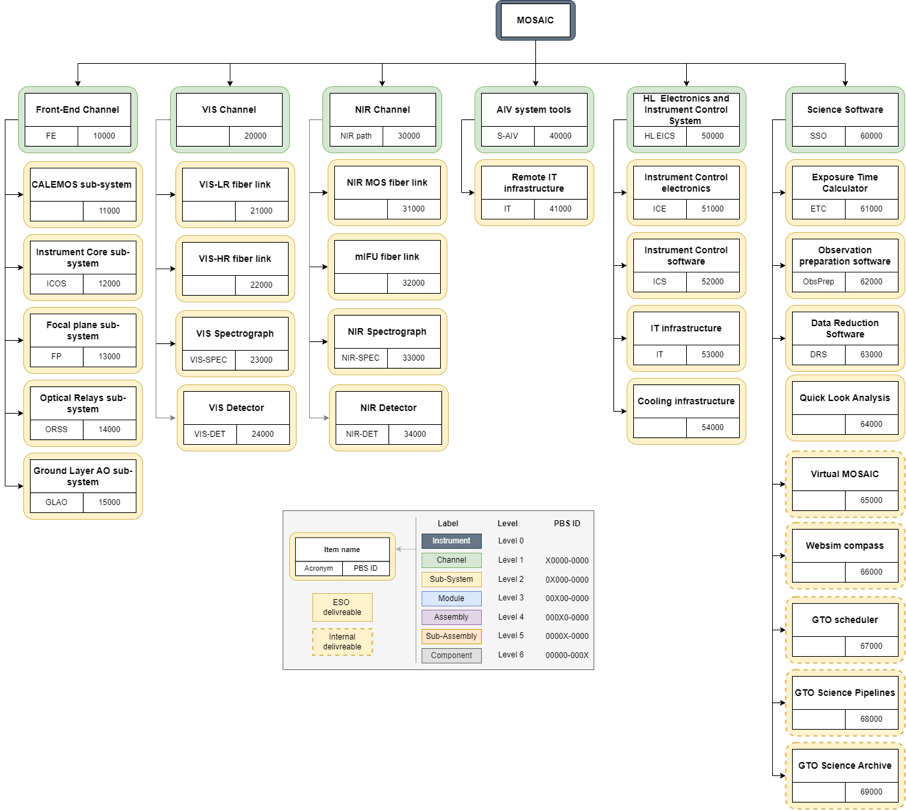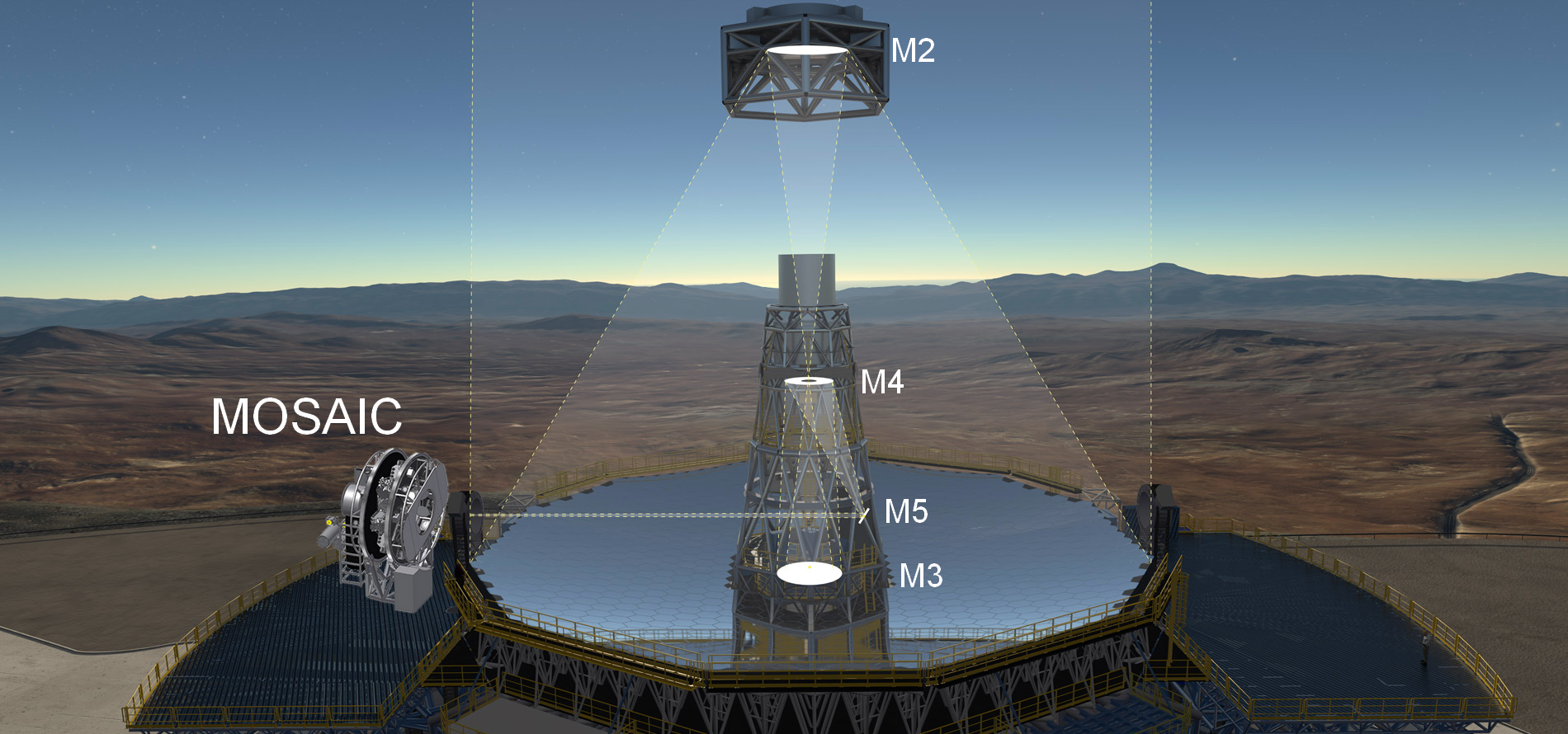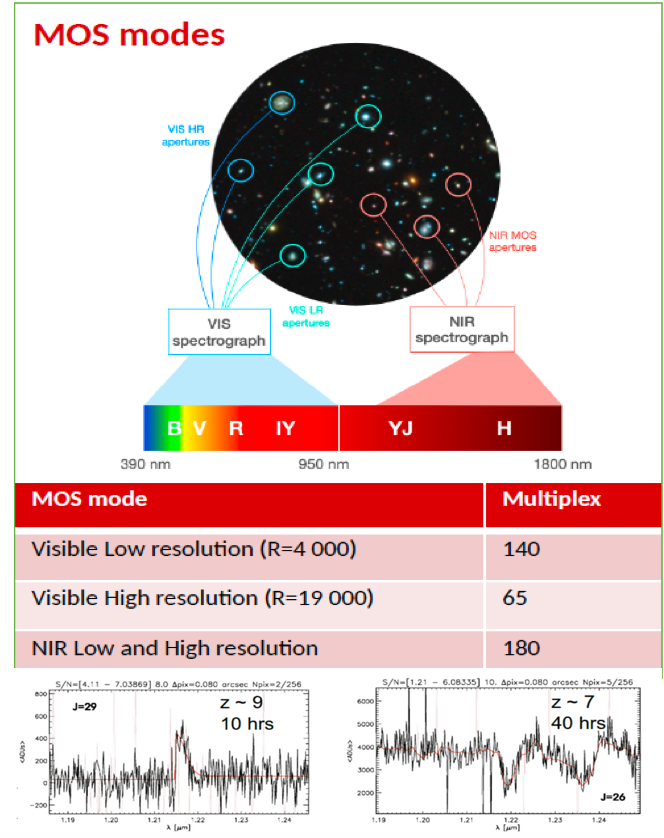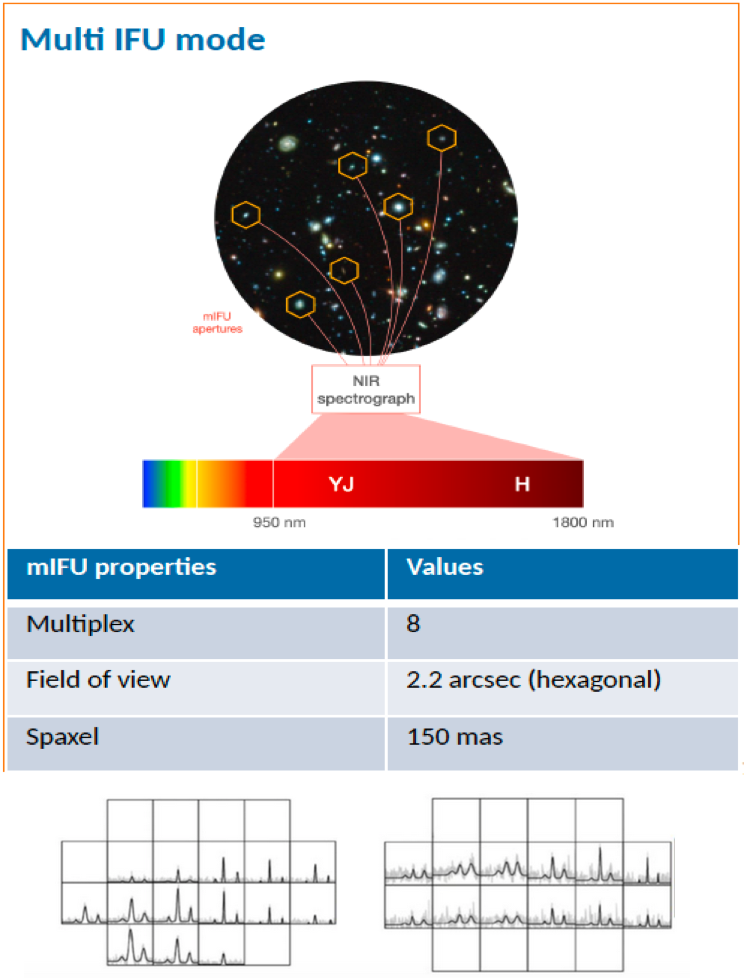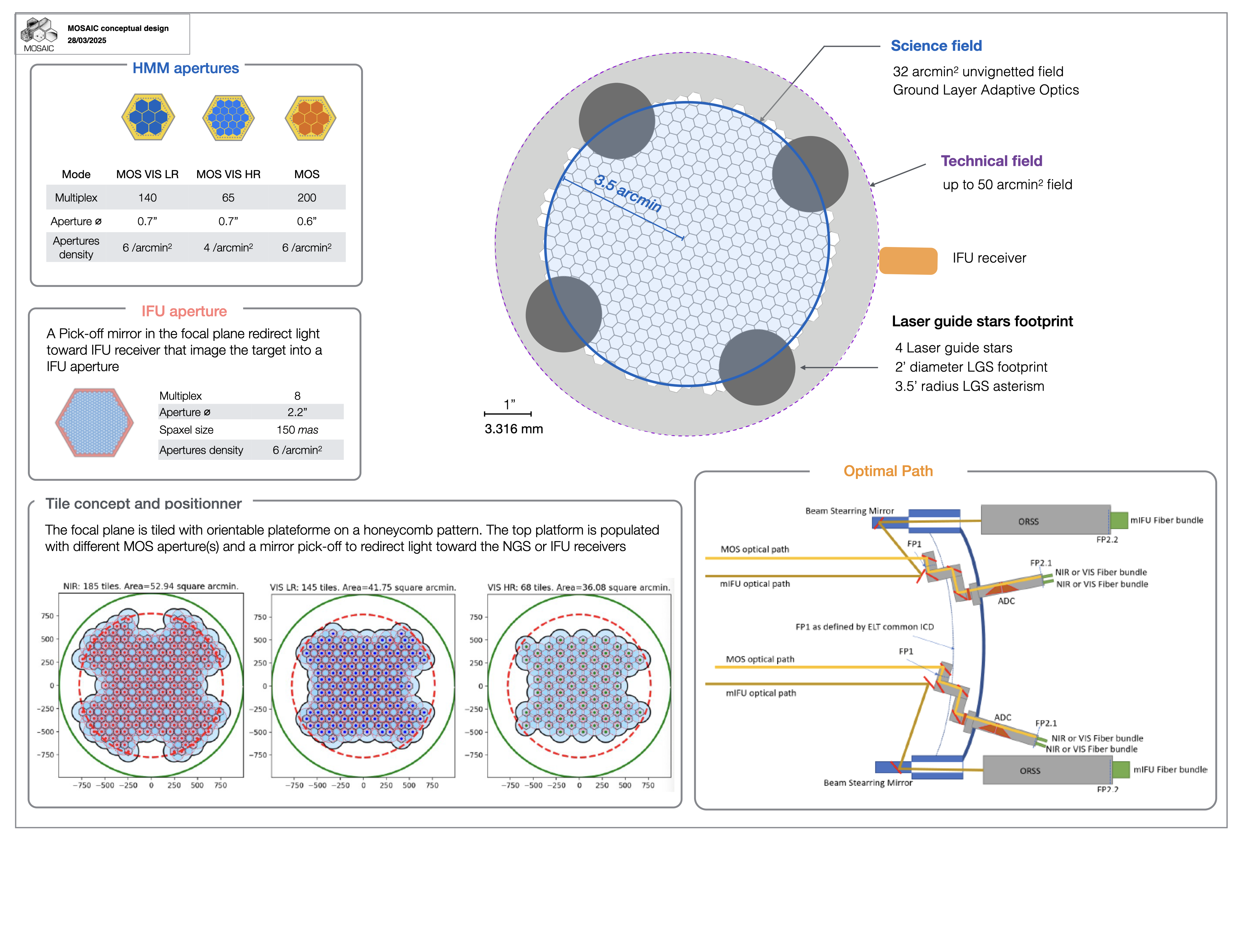MOSAIC in a nutshellMOSAIC is a multi-object and multi-integral field spectrograph that will use the widest possible field of view provided by the ELT. The MOSAIC top-level requirements have been based on a comprehensive White Paper summarizing the very numerous scientific cases for a multi-object spectrograph on the ELT. MOSAIC is conceived as a multi-purpose MOS for the ELT, covering the Visible and Near Infrared bandwidth (0.39 – 1.8 μm) with two modes: multi-object spectroscopy (MOS) and spatially resolved spectroscopy (mIFU). MOSAIC will be located at one of the Nasmyth port of the ELT. The instrument will work with Ground Layer Adaptive Optics image quality over the full field of view of the ELT ~40 arcmin2 and over a nearly full sky coverage. GLAO combines 4 laser guide stars.
| ||
MOS and IFU modes
Even with the unbeatable collecting power of the ELT, the observed astronomical sources are so faint that it will require several hours to obtain spectra. The multi-object spectroscopy mode enables us to observe hundreds of targets simultaneoulsy in a single exposure of a few hours. Without multiplex capability, i.e. possibility to observe several objects at the same time, the same observations would require several hundreds of hours. The IFU mode combines spectrographic and imaging capabilities. The integral field unit slices the astronomical object into several regions, each of them being spectrographied. This leads to spatially resolved observations of the object, by providing a spectrum for each region.
|
|
|
Each mode offers a number of instrument configurations with different spectral resolution and aperture on sky summarized in the table below:
The full VIS is covered simultaneously (in several separated bands) at low spectral resolution, as well as the full NIR domain. One of the two HR-B bands and one of the two HR-R bands in the VIS can be observed simultaneously.
The different on-sky aperture sizes and configurations are summarized in the table below:
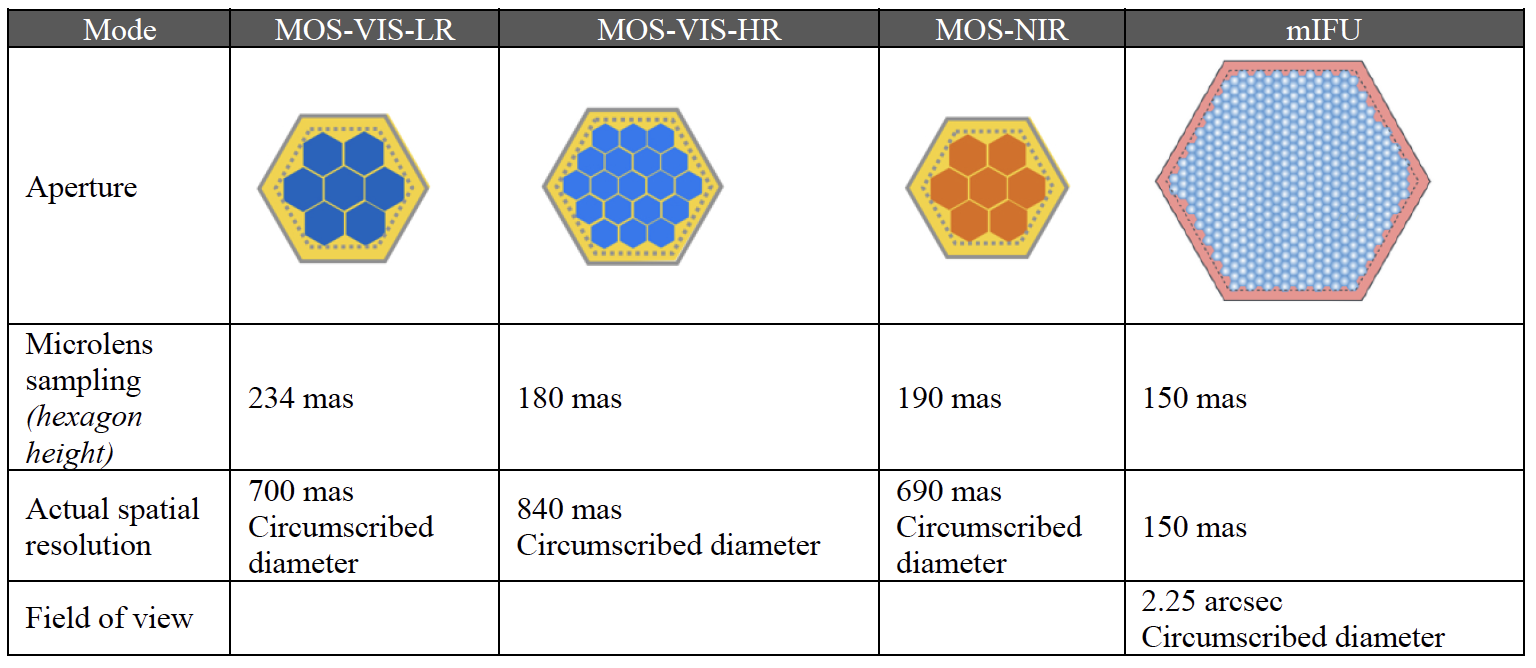
OBSERVING STRATEGIES
MOSAIC offers 3 observing strategies that enable different types of sky subtraction:
- Star mode: This observing strategy is recommended for the observations of bright targets in the VIS bands, thought is still accessible for the other MOS configurations. A fraction of the MOS subfields are allocated to sky position. A model sky spectrum is computed at the position of each science target using OH sky line modelling. This technique considers the absolute and relative variations of OH sky line intensities, as well as variations due to instrumental flexures, which can impact the wavelength scale.
- Nodding: This sky subtraction strategy will be use in MOS-VIS mode for science cases requiring accurate sky subtraction and in MOS-NIR for relatively bright sources. The object and the sky are alternatively by a sub-field following a sequence ABBA or ABAB, obtained by nodding either the telescope or the sub-field.
- Xswitch mode (or Cross beam switching). This strategy provides the state-of-art sky subtraction for faint targets observed in near-IR. Sub-fields are placed in pairs separated by a few arcsecs and forming a dual aperture. The object is observed in both fibers following a sequence ABBA or ABAB, obtained by nodding either the telescope or the sub-field. During the consecutive A-B sequences, a given object is always observed by one of the fibres bundle of the pairs alternately. This method has the advantage to be similar to the nodding along slit and thus is 100% of the time on the scientific targets and allows a very accurate instrumental response subtraction.
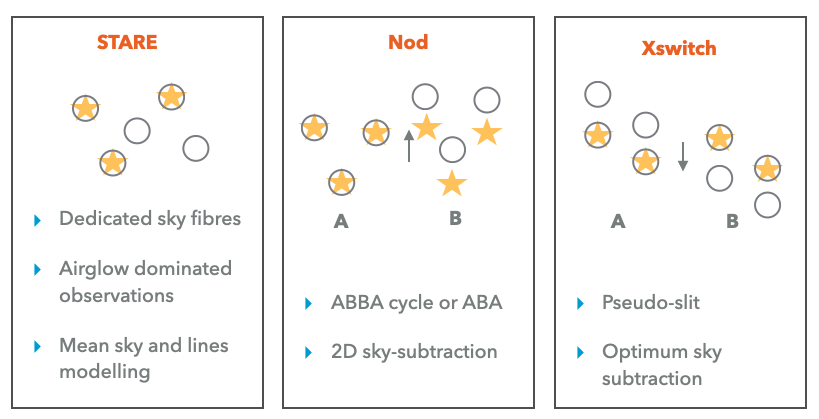
MOSAIC CONCEPTUAL DESIGN
The design is based on two principles: first, MOSAIC will have a shared focal-plate with multi-function tiles which can serve as pick-offs for any of the modes and GLAO, and second, it will include shared-slit spectrographs for which the spectrograph optics and detectors can be used either for the MOS mode or for the mIFU mode.
Shared focal-plate
MOSAIC focal plane is filled by hexagonal tiles. On each tile there will be a locally controled positioner that allocates for some the MOS apertures and for the IFU pick-off mirror. The figure below shows a conceptual design for the MOSAIC focal plane and the implementation of the different observational modes and associated instrument configuration:
-
MOS-VIS-LR: 145 sub-fields of 0.70” in diameter to be allocated within the full field of view. Each sub-field consists in bundles of 7 microlens, directly attached to the fiber link feeding the spectrograph.
-
MOS-VIS-HR: 68 sub-fields of 0.70” in diameter to be allocated within the full field of view but with a lower density than MOS-VIS-LR. The sub-field is fragmented into 19 microlenses.
-
MOS-NIR: 185 sub-fields of 0.60” in diameter (fragmented into 7 microlenses)
-
mIFU: 8 mIFU receivers at the edge of the field re-image into a microlend-fibre array the light coming from pick-off mirror located in the field of view.
The figure below shows the optical path of the Instrument, with the two independent paths: the Visible science path (in blue shades) and the NIR science path (in red shades).

PRODUCT BREAKDOWN STRUCTURE
The MOSAIC instrument is structured of several systems/channels and sub-systems. The figure below shows the top-level product tree. The product tree is, where possible, split into functionally coherent units, with the aim of easing the design and integration of the whole instrument across the consortium. System level units should be, in most cases, capable of being tested and verified independently before integration with other systems.
